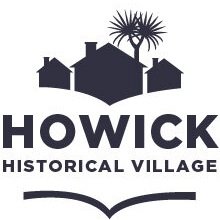Join us in Bell House for a scholar talk led by PhD student Isabelle Carter
Isabelle’s talk focusing on harakeke and European flax is the result of a three-month Researcher Employability Project, which is part of her PhD journey, funded by the distinguished White Rose College of the Arts and Humanities. She is currently in the third year of her PhD within the Department of Archaeology at the University of York where she is studying squatters’ settlements in Early Modern England.
For this ethnobotanical project, Isabelle is examining the initial European misunderstanding of harakeke (Phormium tenax) as a flax. The talk will focus on the cultural significance of harakeke for Māori, with the many different uses of this amazing plant, including the great breadth of material culture that can be made from it. There will be a discussion of the European and Pākehā attempts to process harakeke during the eighteenth, nineteenth, and twentieth centuries using methods similar to those used for European flax (Linum usitatissimum), resulting in the exploitation of harakeke to produce large quantities of cordage and canvas.
For the first month of the project, Isabelle was based in London in the UK conducting research at The National Archives, the British Museum, Kew Gardens, The Natural History Museum, and the Caird Library. For the second and third months of the project, she has been based at Howick Historical Village, where she completed primary source collections research; attended harakeke weaving wānanga; partook in Tāmaki Paenga Hira Auckland Museum’s Te Aho Mutunga Kore Community Forum; and conducted interviews with weavers and museum professionals, focusing on their experiences with both harakeke and European flax. The photographs that she took during these visits, and the contents of these discussions, will be included in this talk.
Additionally, the project will result in a permanent display board that will be able to be seen in the Village, located between the harakeke and wharariki (Phormium cookianum), in front of John Bycroft’s Flour Mill.
The talk itself will be one hour, with half an hour for questions and discussion.

